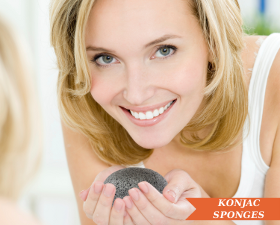WHAT IS A KONJAC SPONGE?
The konjac sponge has become an extremely popular bath accessory in the United States and around the World over the past couple of years and it’s a good idea to understand the origin and the beneficial qualities of the sponge if you are considering adding it to your bathing routine.
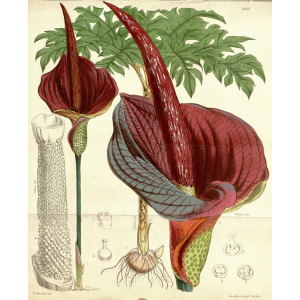 You may have read that the sponge is a natural product that does not contain the harmful additives that are often found in synthetic bath products. This is true because konjac is derived from a fiber known as glucomannan that is harvested from the root of a plant that is native to the tropical areas of eastern Asia.
You may have read that the sponge is a natural product that does not contain the harmful additives that are often found in synthetic bath products. This is true because konjac is derived from a fiber known as glucomannan that is harvested from the root of a plant that is native to the tropical areas of eastern Asia.
The most common countries where the konjac plant is found include China, Japan, Korea, and Taiwan. The plant can grow to be quite large with a stem diameter of up to 10 inches and leaves that extend up to 4 feet! The material that is used in the konjac sponge is taken from an enlarged area of the stem that grows underground.
HOW IS A KONJAC SPONGE MADE?
The process for creating a konjac sponge is commonly compared to baking a cake. The root from the konjac plant is turned into a powder which is then mixed with water to form a paste. The paste is then mixed with calcium hydroxide (commonly used in the food industry) and heated. This process solidifies the paste. The sponges are then allowed to dry before being packaged.
Most konjac sponges that are sold in the United States today arrive in dry form and must be run under warm water before use. The konjac fiber holds water extremely well which makes it the perfect product for use as a gentle bath sponge that does not injure the skin like some aggressive forms of exfoliation.
In fact, the konjac sponge is so soft that it was initially used in Southeast Asia as a bath sponge for babies. Over time, adults gradually began using the sponges as they learned to appreciate the benefits of gentle exfoliation along with the many other health benefits that have been attributed to the konjac plant.
GLUCOMANNAN BENEFITS
The glucomannan fiber found in the konjac plant makes up about 40% of the root’s dry weight and is the primary component of the konjac paste that is used in the sponge production process. While there aren’t many formal scientific studies to support the claims that have been made about the health benefits of glucomannan, it is widely believed that the konjac plant helps with conditions such as constipation, obesity, high cholesterol, acne, and diabetes.
As with any dietary supplement, individuals should consult with a medical professional before deciding to consume glucomannan in oral form. The Federal Trade Commission (FTC) as well as the Food and Drug Administration (FDA) have issued warnings relating to the consumption of supplements containing glucomannan.
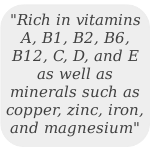 The konjac plant has been used in Chinese medicine for over 1,500 years and is believed to be rich in vitamins A, B1, B2, B6, B12, C, D, and E as well as minerals such as copper, zinc, iron, and magnesium.
The konjac plant has been used in Chinese medicine for over 1,500 years and is believed to be rich in vitamins A, B1, B2, B6, B12, C, D, and E as well as minerals such as copper, zinc, iron, and magnesium.
Although the health benefits of consuming components of the konjac plant in the form of food or as a supplement is up for debate and should be approached with caution, the benefits associated with its use as a bathing accessory are hard to deny. Those who have used a konjac sponge often attest to its ability to gently exfoliate the skin while removing excess dirt and oil which results in a softer touch, brighter complexion, and fewer breakouts.
On top of these benefits, the sponges do not contain the potentially harmful synthetic materials found in other bath products and they can be composted after being used which makes them earth friendly for those who are concerned about their impact on the environment.
SIZE, SHAPE, & COLOR
If you’ve seen the konjac products being sold in your local beauty store or online, then you know that there are several different shapes, sizes, and colors available. It can be challenging to try to decide which sponge is most appropriate for your needs and it can be very helpful to have some understanding of the positives and negatives associated with the various konjac products.
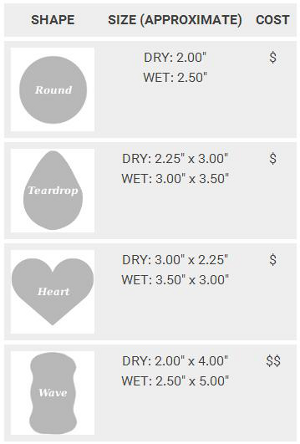 The size and shape of a konjac sponge is generally important for functional reasons. Some people find that the round and tear drop sponges tend to be on the smaller side which makes them great for use on the face, but not so great as a full-body sponge.
The size and shape of a konjac sponge is generally important for functional reasons. Some people find that the round and tear drop sponges tend to be on the smaller side which makes them great for use on the face, but not so great as a full-body sponge.
In addition, the smaller the sponge the harder it is to hold onto once it is wet. Konjac sponges tend to become a bit slippery when wet and; therefore, it may be prudent for those with larger hands to pass on the round and tear drop sponges in favor of the larger wave shaped sponges.
When deciding on the appropriate size and shape of the sponge, it’s worth mentioning that the round and tear drop sponges tend to be about the same price because they are similar in size. If you are thinking about purchasing a square or wave shaped sponge then you should expect to pay more since they are often twice the size of the smaller sponges. Although the higher price can be an important factor in the purchasing process, many people find that the larger size is more convenient and well worth the additional cost.
In addition to size and shape, color is another important factor to consider when purchasing a konjac sponge. In general, the color of the sponge corresponds to a specific type of natural additive that is believed to impart additional benefits. Below is a summary of a variety of different colors that you are likely to encounter…
| COLOR | BENEFITS | |
|---|---|---|
 | 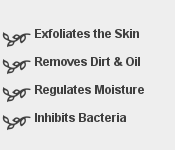 |  |
 | 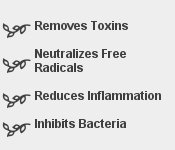 |  |
 | 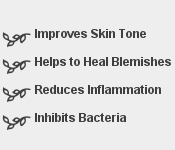 |  |
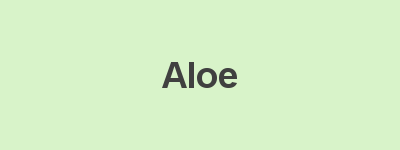 | 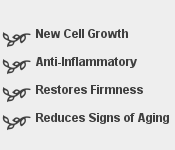 |  |
 | 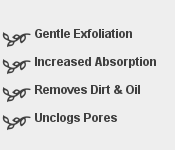 |  |
 |  |  |
- Black: Bamboo Charcoal – used by the Chinese as far back as 1486 during the Ming Dynasty to remove impurities and smells. Its use in the konjac sponge is believed to help exfoliate the skin; remove dirt, oil, and other impurities; regulate moisture levels, and inhibit bacterial growth.
- Dark Green: Green Tea – traces its history back to the reign of Emperor Shennong and the Tang Dynasty in China. Contains antioxidants, amino acids, phytochemicals, B vitamins, folate, manganese, potassium, and other components that are believed to improve complexion by removing toxins, inhibiting bacterial growth and inflammation, neutralizing free radicals, counteracting signs of aging, reducing pore size, and healing blemishes.
- Yellow: Turmeric – derived from a perennial plant of the ginger family that is native to southern Asia. Turmeric is used widely in India as part of Hindu ceremonies. Contains antioxidants and other components that are believed to inhibit bacterial growth, even out skin tone, reduce inflammation, remove excess dirt and oil, and help heal blemishes.
- Light Green: Aloe – well recognized as an herbal medicine that is supported by scientific and medical research. Contains auxin and gibberellins hormones that help to reduce inflammation and encourage new cell growth. Its soothing anti-inflammatory properties are ideal for treating sunburn and chronic skin conditions such as acne and eczema. Aloe also contains beta carotene as well as vitamin C and E which help restore the skin’s firmness and reduce signs of aging.
- Others: Clays and Pigments – colors such as red, orange, and pink generally contain a pigment or some type of clay that gives them their color. In cases where clay is added, the sponge may have additional absorptive properties that can help remove excess dirt and oil, but rarely impart any other type of nutritive benefit beyond that which is gained from the konjac plant fiber itself.
USE & CARE INSTRUCTIONS
In most cases, a konjac sponge that is purchased from a beauty store or online is provided in a rough dehydrated form and must be placed in warm water for a few minutes before being used. Once the sponge has had a chance to absorb a good amount of water, it will then become very soft to the touch and can be used on the face or body to provide an extremely gentle exfoliation that is particularly well-suited for use around delicate areas of the face including the eyes and mouth.
While it is possible to apply some types of natural cleansers to the sponge without dramatically shortening its lifespan, we do not recommend using synthetic cleansers that might contain harsh chemicals because they can cause the sponge to break down and fall apart rather quickly. Konjac sponges are created from natural products that are not capable of withstanding the degrading effects of many synthetic cleansers.
When you have finished using the sponge, it is a good idea to gently press the excess water out of the sponge without twisting or stretching it before hanging it to dry. This approach will help reduce the likelihood of holes and tears that could cause the sponge to fall apart faster than usual. The sponge should then be hung by its string in a well-ventilated area so that it can dry before the next use.
The ability of the sponge to dry between uses is heavily dependent on humidity and the size of the sponge. Since round and tear drop sponges tend to be smaller, they will typically experience a significant amount of drying over the course of 24 hours in an environment that has low to moderate levels of humidity. The larger wave shape sponges do not experience as much drying due to their size and you may want to alternate between two of the larger sponges if the drying effect is of significant importance to you. In general, the sponges should not grow moldy as long as they are used on a regular basis. Individuals who live in high humidity regions may want to consider alternating between several sponges in order for the sponges to dry consistently.
HOW TO MAKE THE SPONGE LAST LONGER
Sponges that are allowed to dry between uses do tend to last longer. For this reason, it is important to gently squeeze out the excess water without twisting or stretching the sponge before hanging it to dry in a well-ventilated area. Hot and humid climates will cause the sponge to break down faster. Those who live in humid climates might want to consider placing the sponge in a refrigerator after placing it in a bag or sealed container. This practice has been shown to extend the life of the sponge.
Some people believe that boiling a konjac sponge is an effective technique for disinfecting it. While this may be true, the use of boiling water can cause the sponge to break down faster since it is made from natural materials. If you would like to disinfect the sponge on a periodic basis, we recommend that you use hot water rather than boiling water for a three to five minute period of time. The water should then be drained and the sponge allowed to cool down before handling so as not to burn one’s hands.
We strongly advise against microwaving the sponge as a means of disinfecting it. This approach can cause the sponge to rapidly deteriorate and should be avoided.
Those who practice the konjac sponge use and care instructions outlined above often find that each sponge will last between four and twelve weeks before needing to be replaced. For maximum benefit, we recommend that each sponge be replaced no more than twelve weeks after first use.
Although extremely rare, individuals do occasionally receive a defective sponge that may begin falling apart faster than usual. This is usually the result of an error that has occurred during the manufacturing or fulfillment process. In these cases, we will gladly refund your money or send out a free replacement as soon as we have been contacted about the issue.
COMMON QUESTIONS
Q: How long do the sponges last?
A: In general, we recommend replacing each sponge after 2 – 3 months of consistent daily use. The lifespan of each sponge is typically dependent on frequency of use and whether or not facial cleanser is used. Many customers find that the sponges hold up well beyond our recommended replacement schedule due to their high quality.
Q: How well do the sponges exfoliate the skin?
A: The sponges provide a very gentle exfoliation that is particularly well-suited for delicate areas of the face including around the eyes and mouth. Those looking for a moderate to aggressive exfoliation may want to consider other products.
Q: Can soap be used on the sponges?
A: Soaps and cleansers that do not contain harsh synthetic chemicals can used on the sponges. Konjac sponges are created from natural materials that are prone to break down if exposed to harsh synthetic chemicals and; therefore, some soaps and cleansers should be avoided.
Q: Do the sponges reduce the size of pores?
A: The sponges are excellent for removing excess dirt and oil from the skin which may, in turn reduce the size of pores.
Q: Where are the sponges made?
A: The sponges are made in China. The konjac plant from which the sponges are made are native to Southeast Asia which makes this region particularly appropriate for konjac sponge manufacturing.

